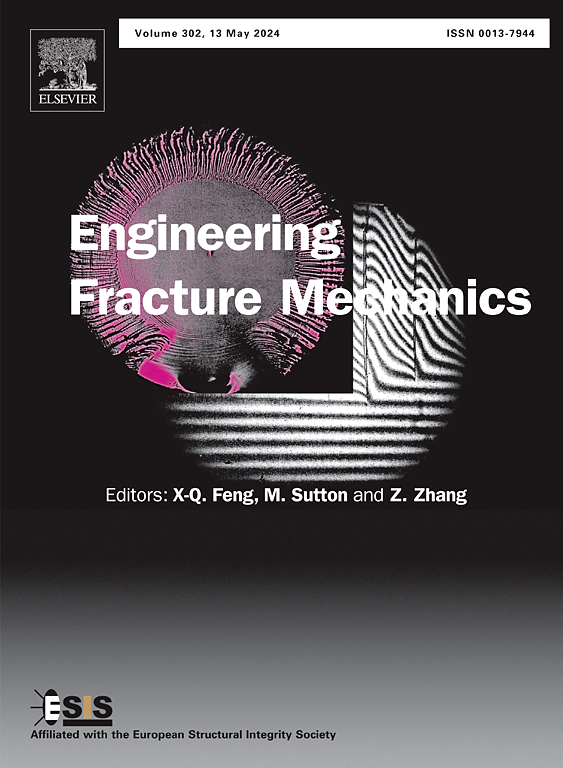基于应变传递率的非稳态激励下混凝土大坝运行模态分析方法
IF 4.7
2区 工程技术
Q1 MECHANICS
引用次数: 0
摘要
基于传递率的运行模态分析(TOMA)方法由于放宽了对激励特性的假设,使得准确识别实际工程结构的模态成为可能,因而受到越来越多的关注。然而,在具体应用于广谱非稳态地震激发的巨大水工结构的分布式振动响应时,需要在两个维度(沿时间轴或空间轴)上对数据分割进行更恰当的选择。基于分布式振动传感光纤应变透射率的概念,研究了应变格式下基于单参考和多参考透射率的运行模态分析模型,以及相应的模型和模态参数解。进一步发展了结合光纤测量空间分布连续性的假模消除方法、综合考虑振幅/PSD 非稳态的响应序列集优化方法,以及考虑测量信比空间分布的(非)参考点(集)选择原则。案例研究表明,所提出的组合方法可提高混凝土大坝在宽谱非稳态激励下的模态参数识别精度,而分布式光纤振动传感技术可为该方法提供丰富的(非)参考点(集)选择组合。本文章由计算机程序翻译,如有差异,请以英文原文为准。
A strain transmissibility-based analysis approach for operational modal of concrete dam under nonstationary excitation
The transmissibility-based operational modal analysis (TOMA) method is attracting more attentions due to its relaxation of assumptions about excitation properties, making accurately identifying the modes of actual engineering structures possible. However, in specific application on distributed vibration responses of huge hydraulic structures excited by broad-spectrum non-stationary earthquake, more proper selections of data segmentations on two dimensions (along time or spatial axis) are needed. Based on the concept of distributed vibration sensing optical fiber strain transmissibility, the operational modal analysis model based on single reference and poly references transmissibility under the strain format and the corresponding solutions of model and modal parameters are studied. A false mode elimination method combined with the continuity of spatial distribution of optical fiber measurements, a response sequence set optimization method that comprehensively consider amplitude/PSD non-stationarity, and the principle about how to select (non) reference points (sets) considering the spatial distribution of measurement signal-to-ratio are further developed. The case study shows that the proposed combined method could improve the modal parameter identification accuracy of concrete dams under broad-spectrum non-stationary excitation, and the distributed optical fiber vibration sensing technology can provide a rich (non) reference point (set) selection combination for this method.
求助全文
通过发布文献求助,成功后即可免费获取论文全文。
去求助
来源期刊
CiteScore
8.70
自引率
13.00%
发文量
606
审稿时长
74 days
期刊介绍:
EFM covers a broad range of topics in fracture mechanics to be of interest and use to both researchers and practitioners. Contributions are welcome which address the fracture behavior of conventional engineering material systems as well as newly emerging material systems. Contributions on developments in the areas of mechanics and materials science strongly related to fracture mechanics are also welcome. Papers on fatigue are welcome if they treat the fatigue process using the methods of fracture mechanics.

 求助内容:
求助内容: 应助结果提醒方式:
应助结果提醒方式:


